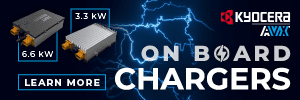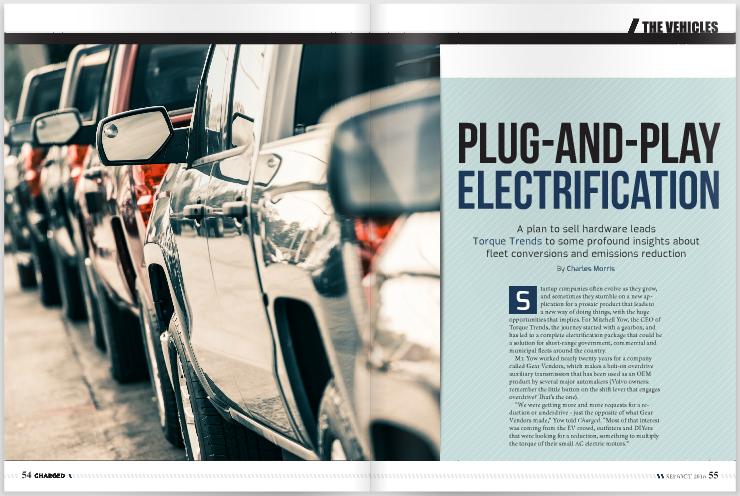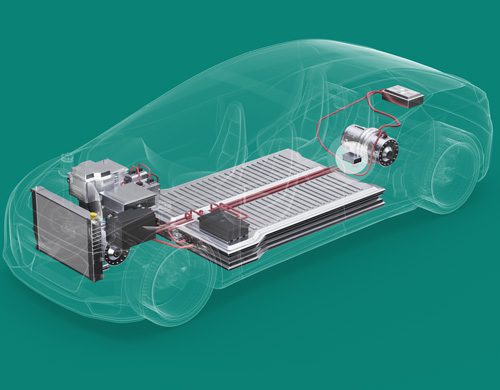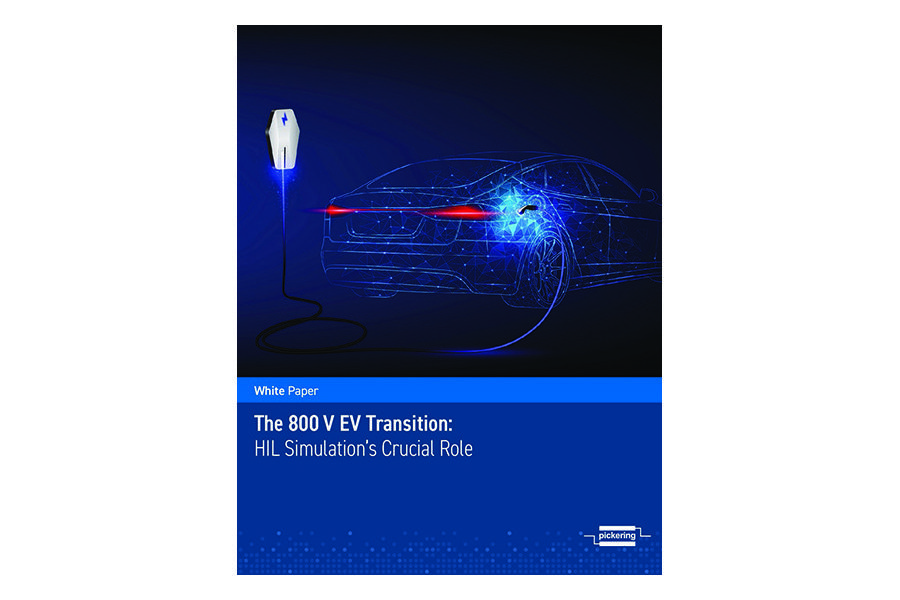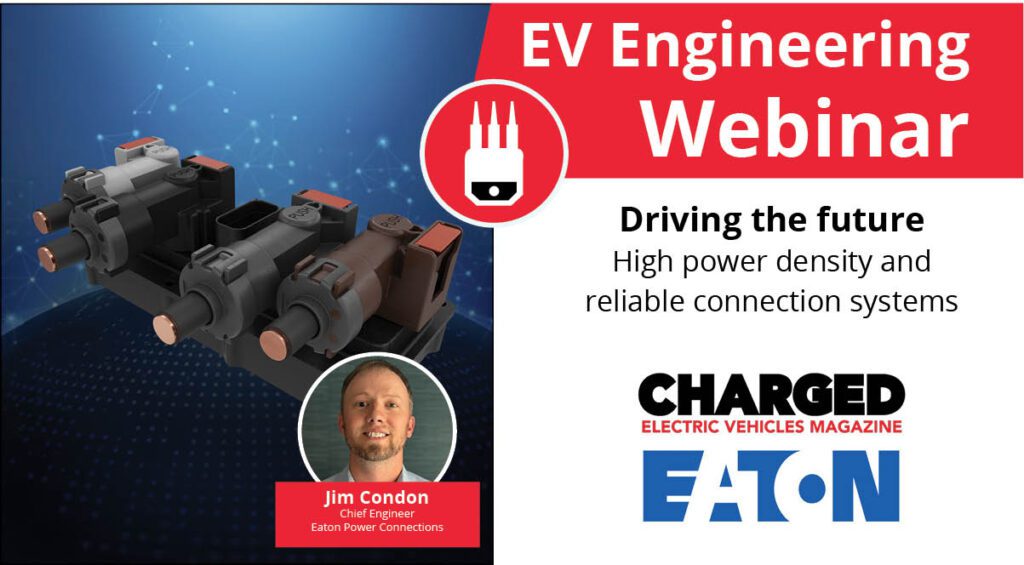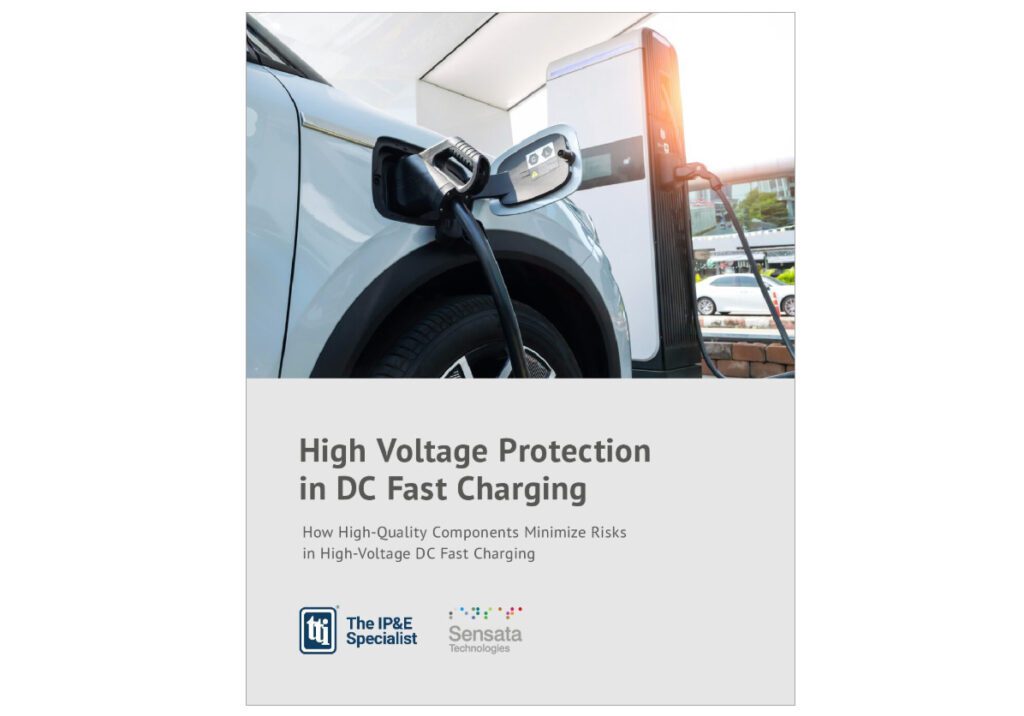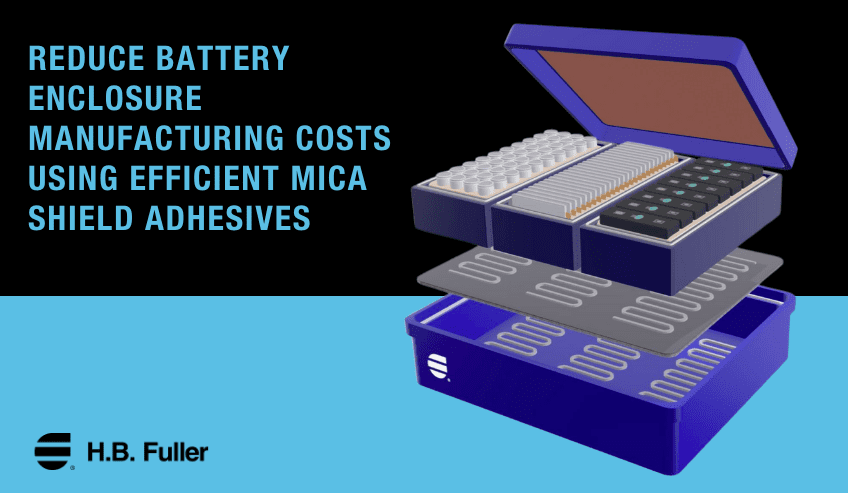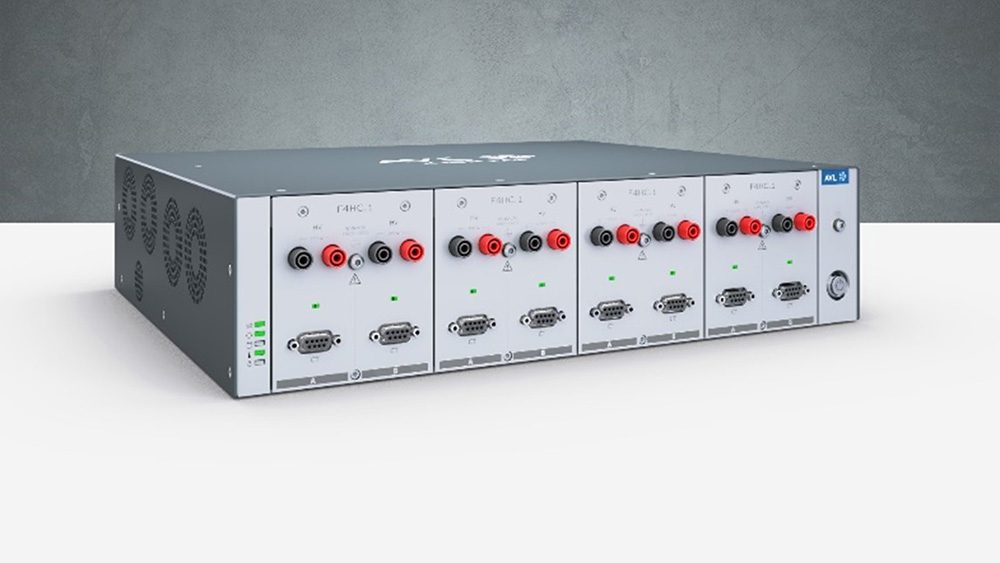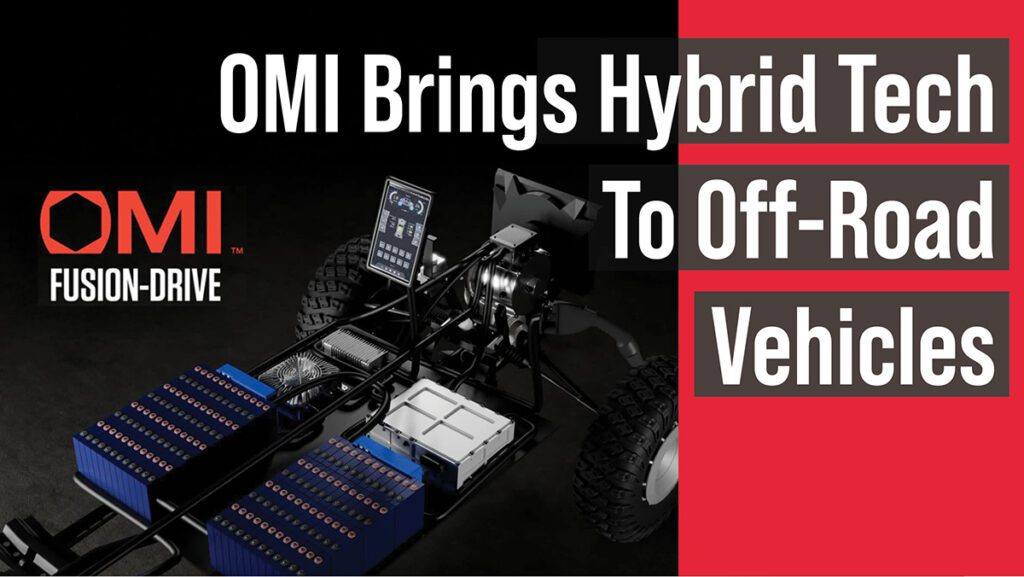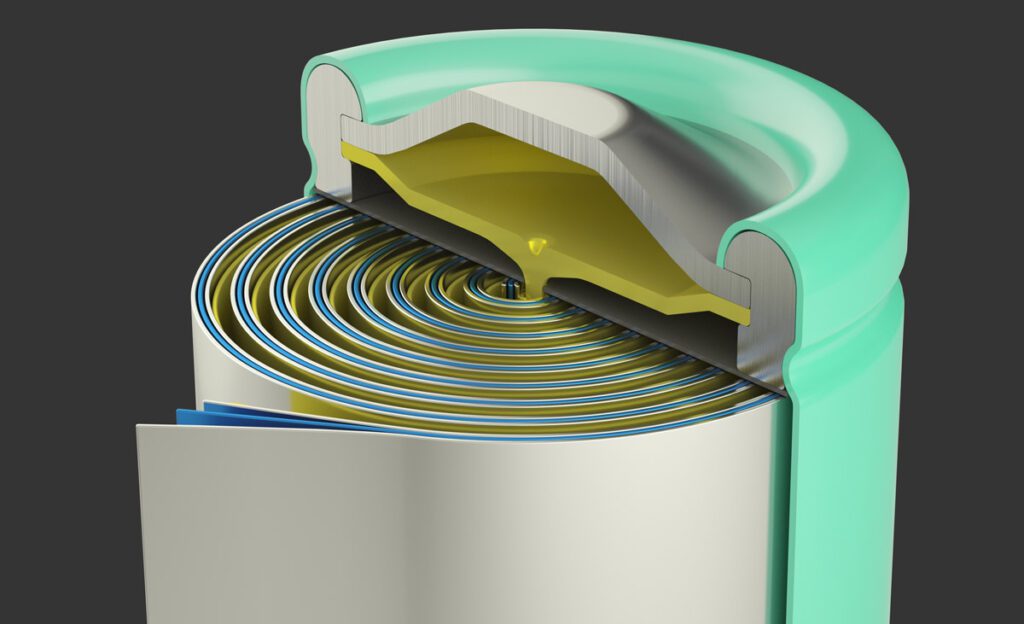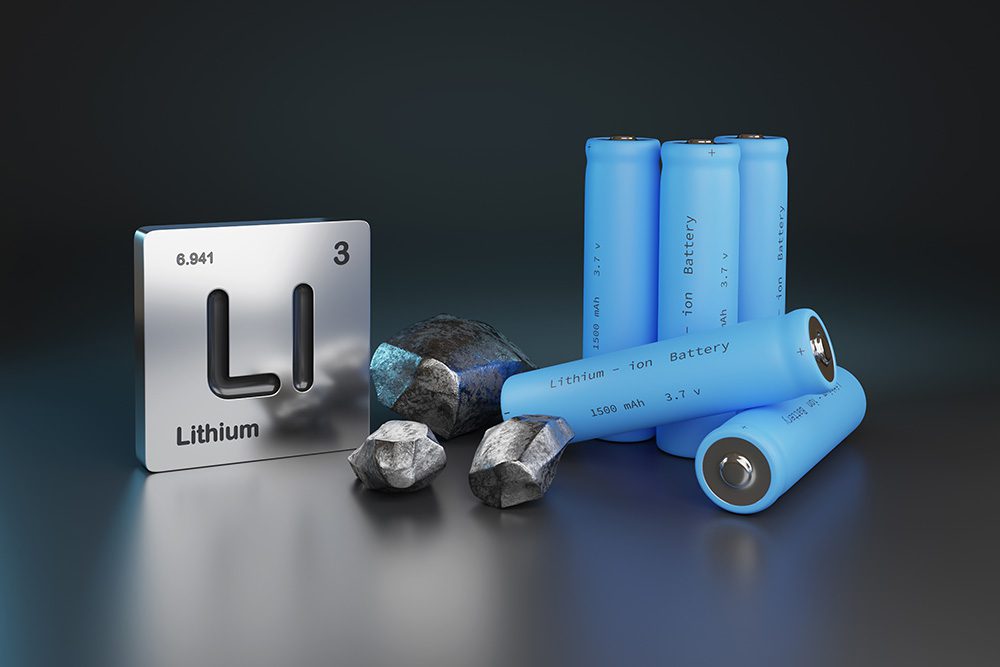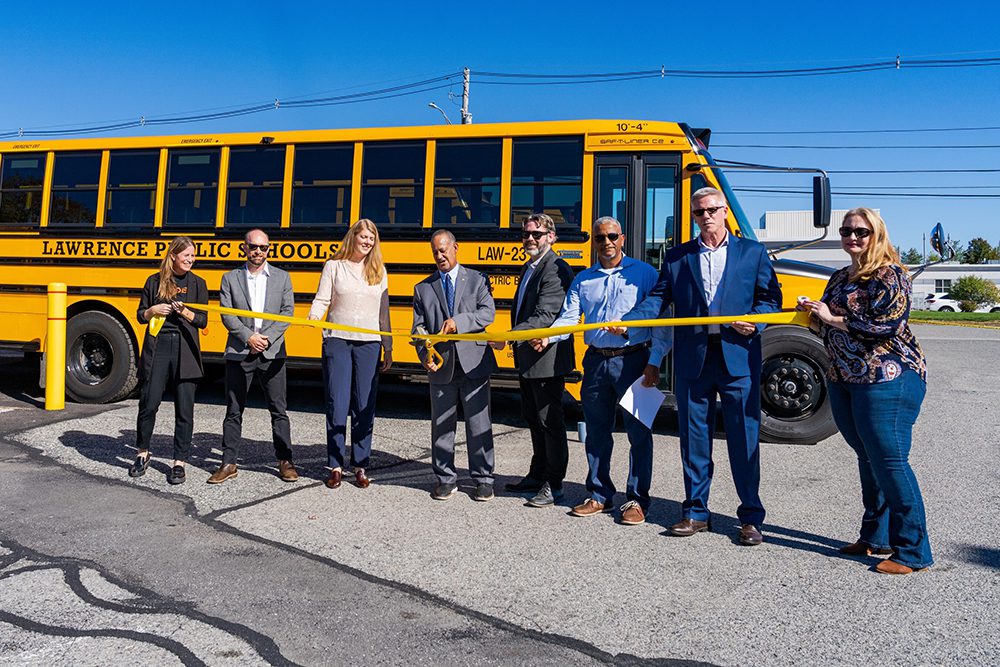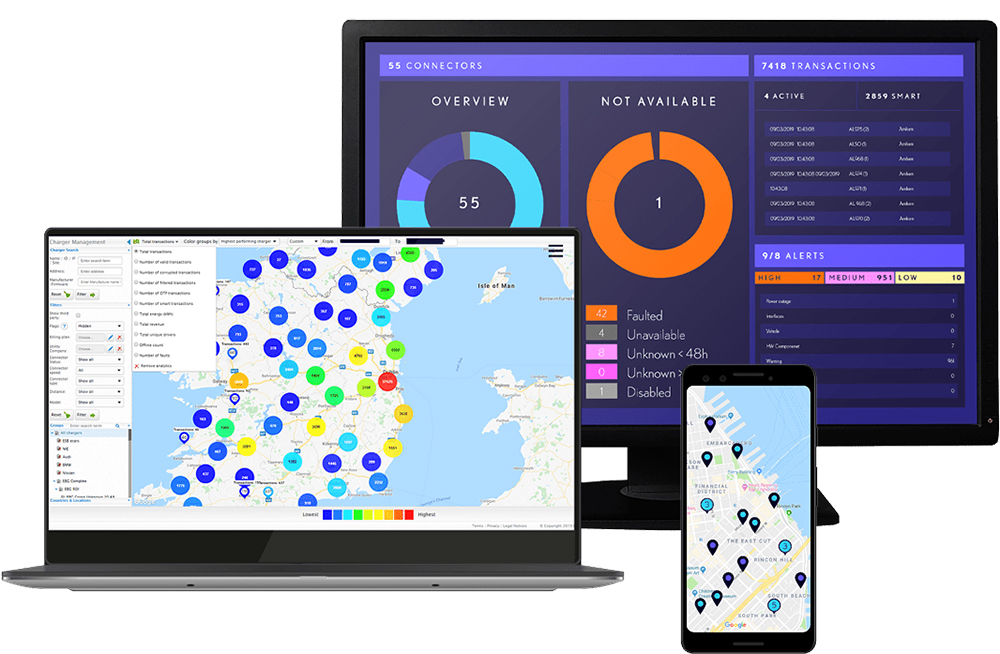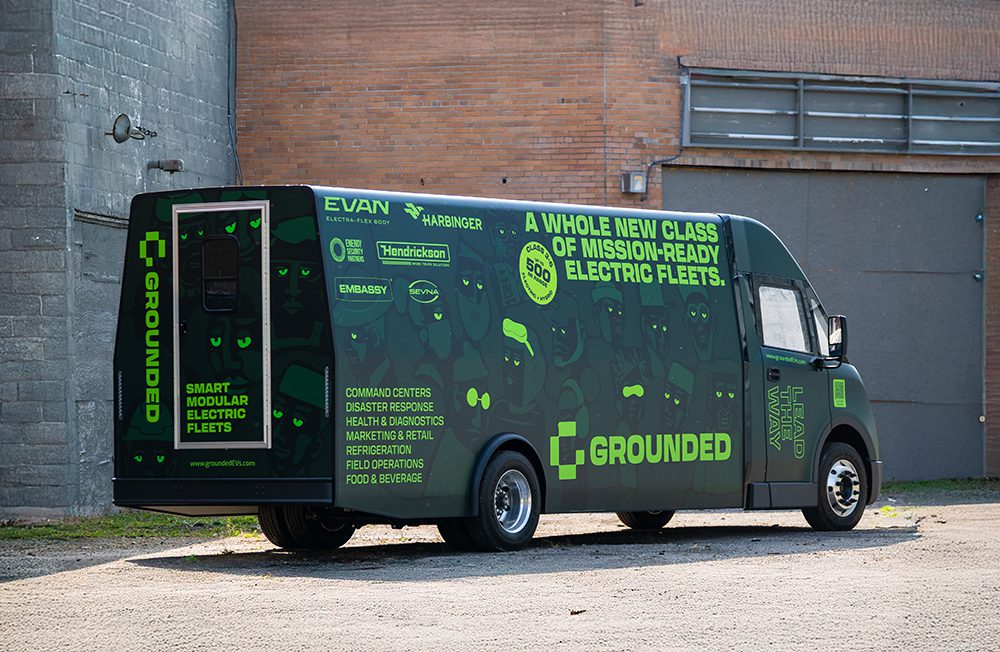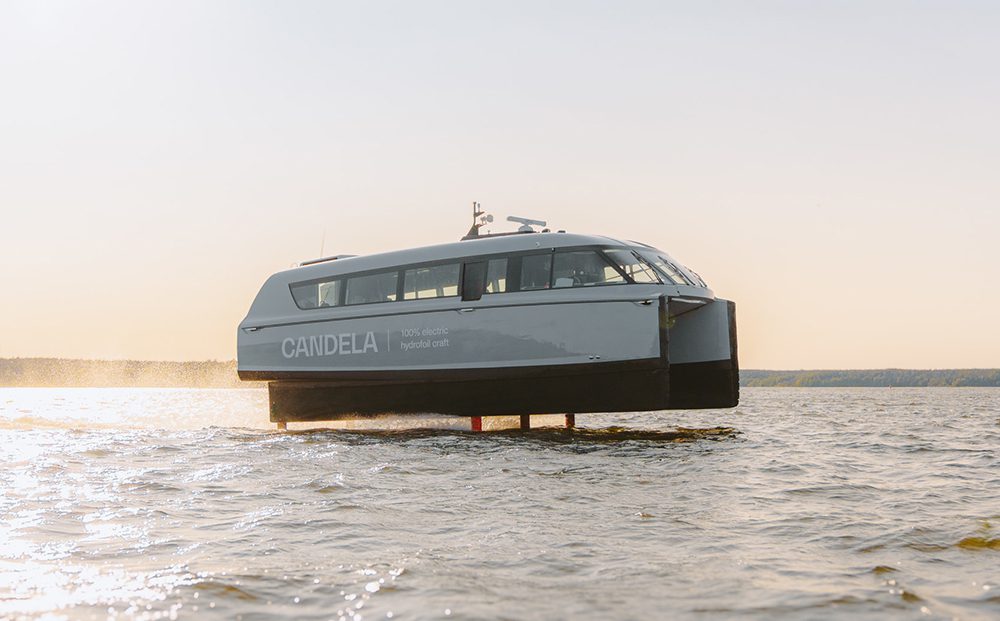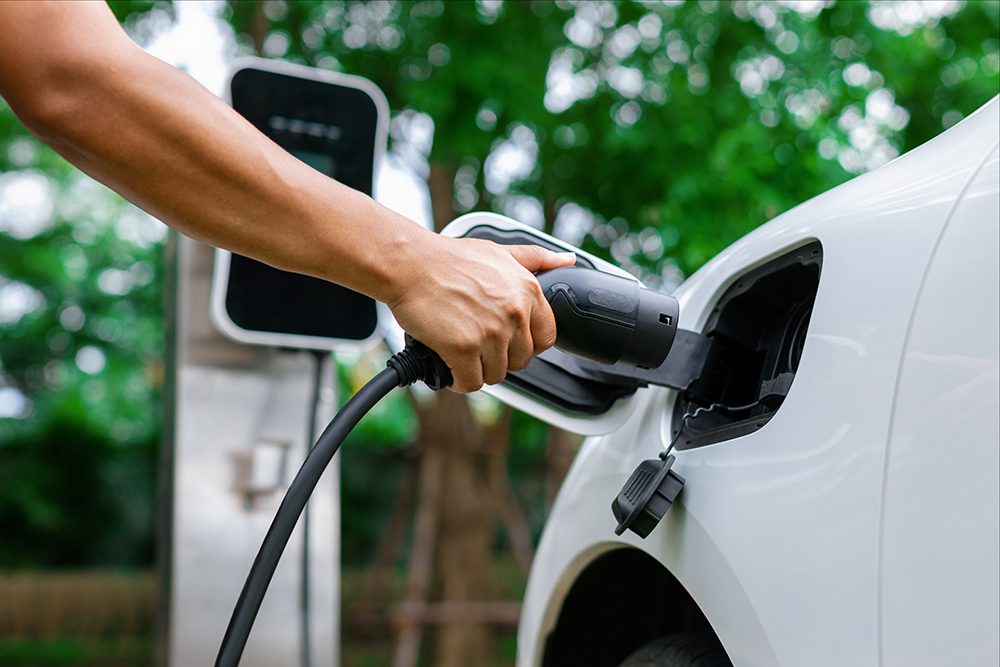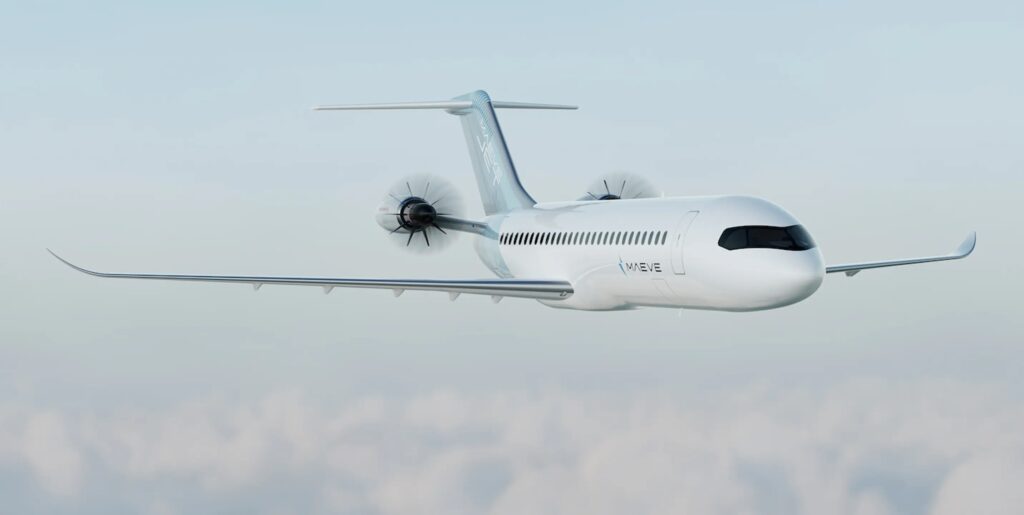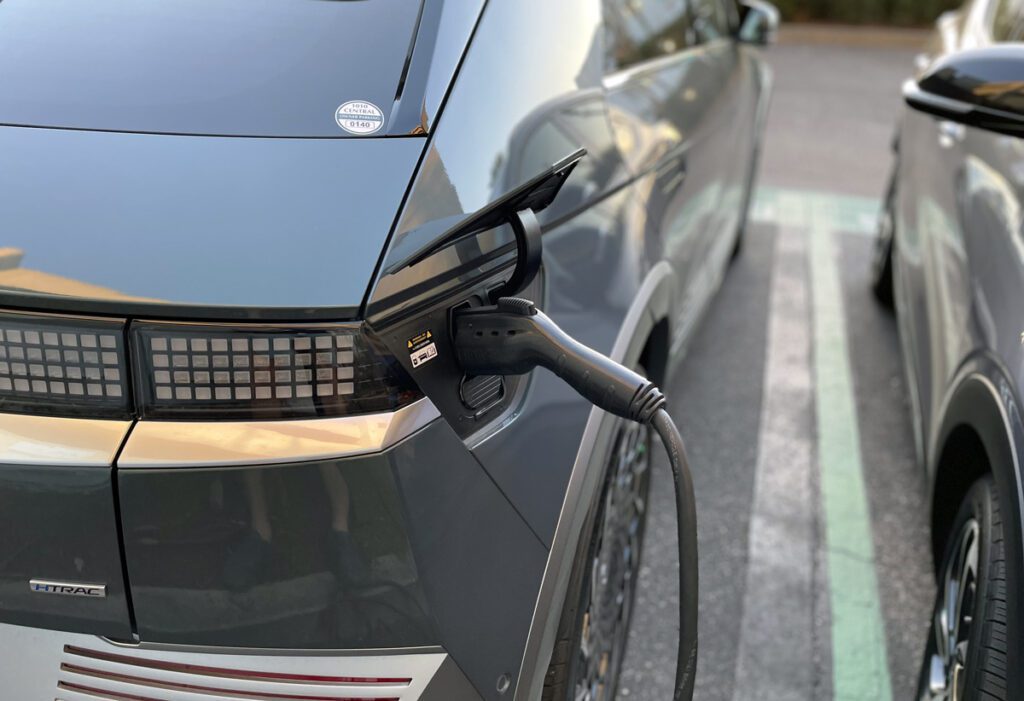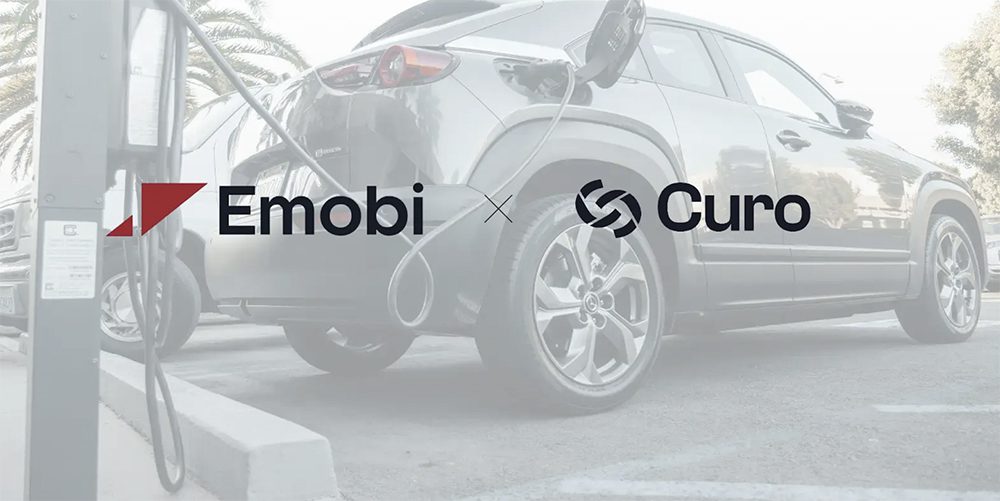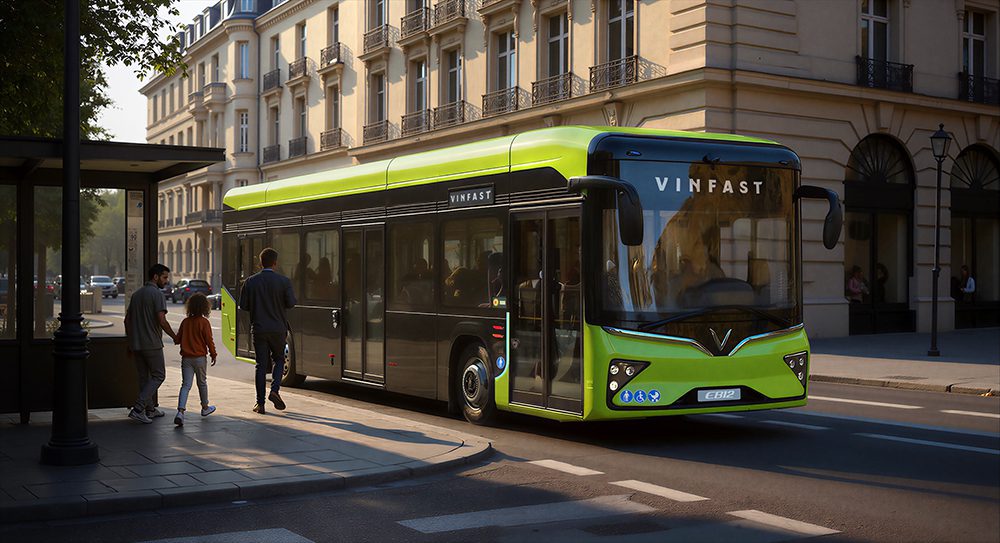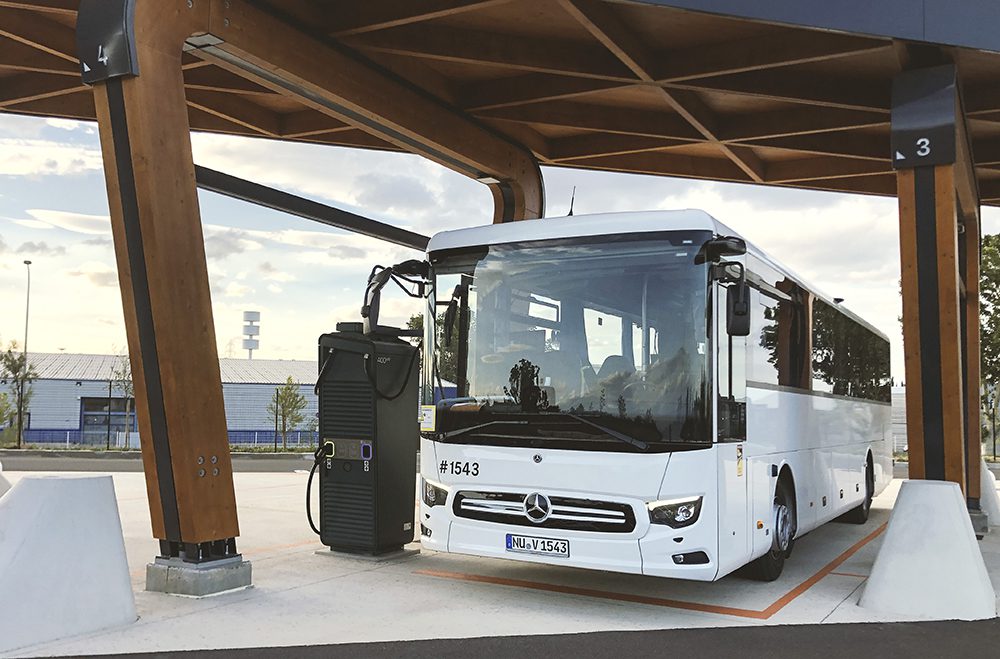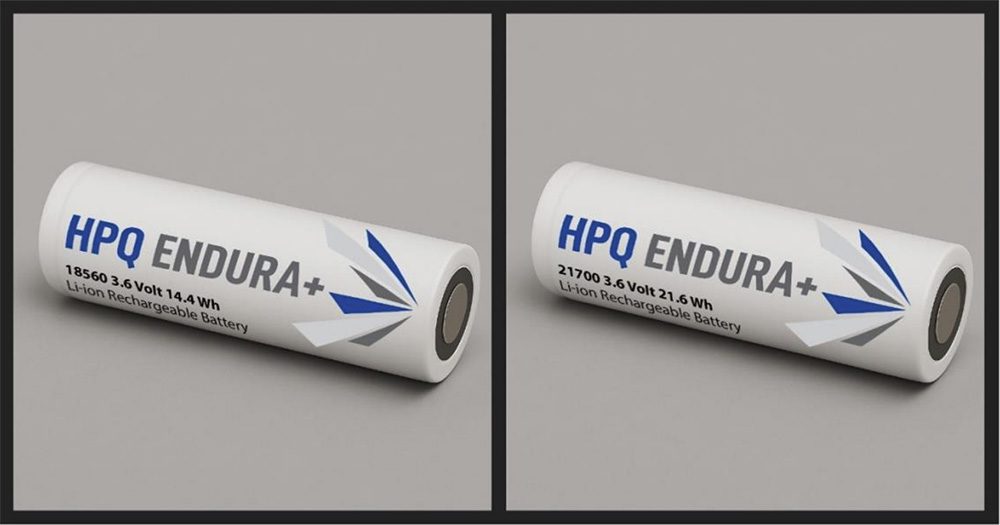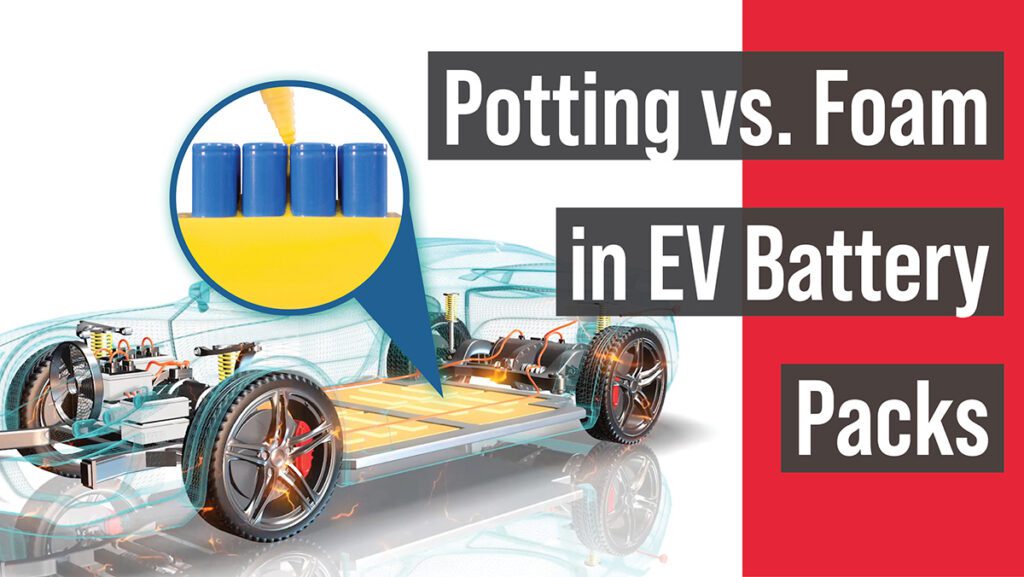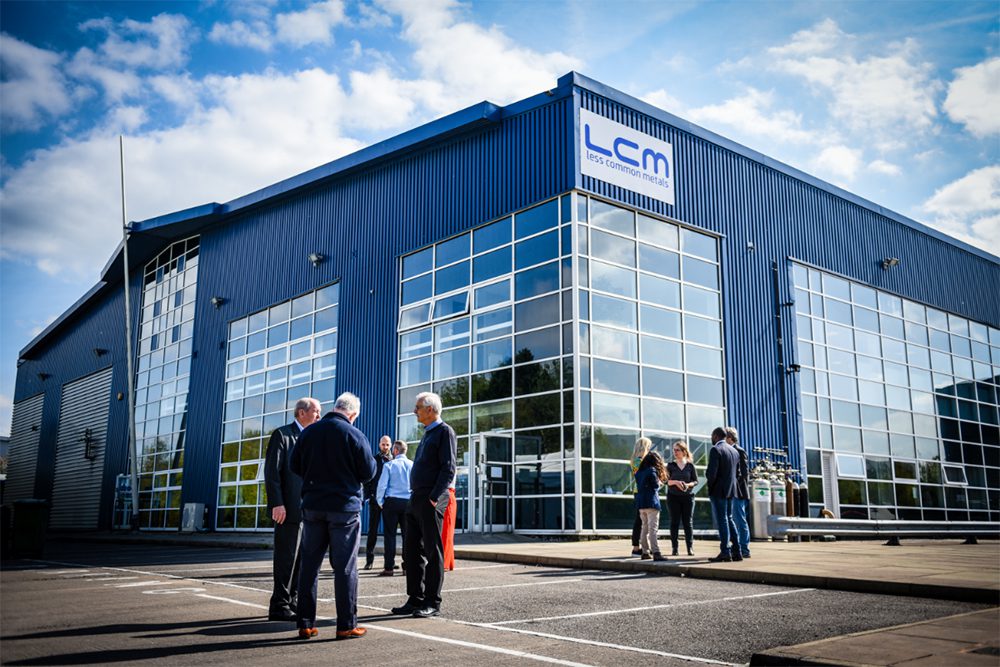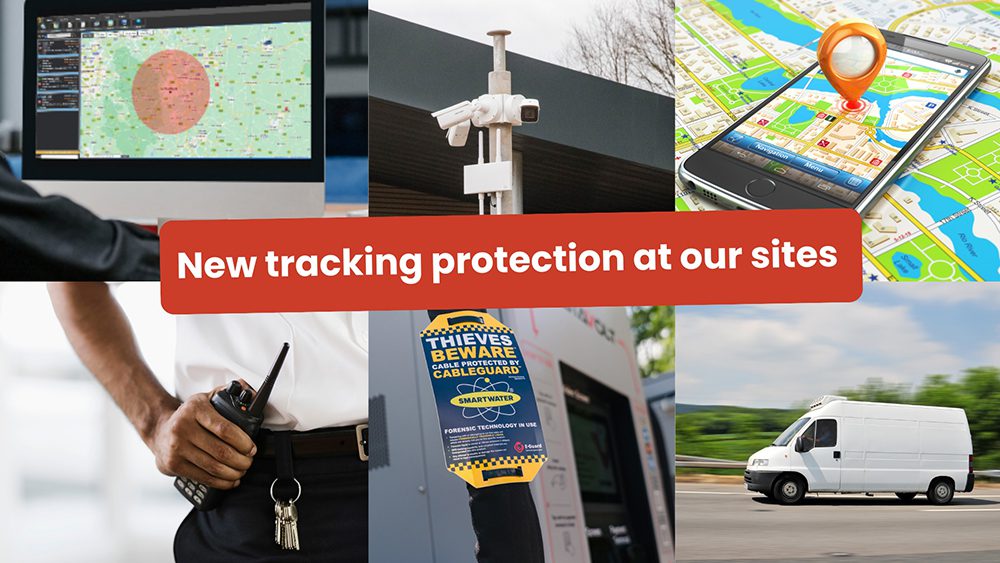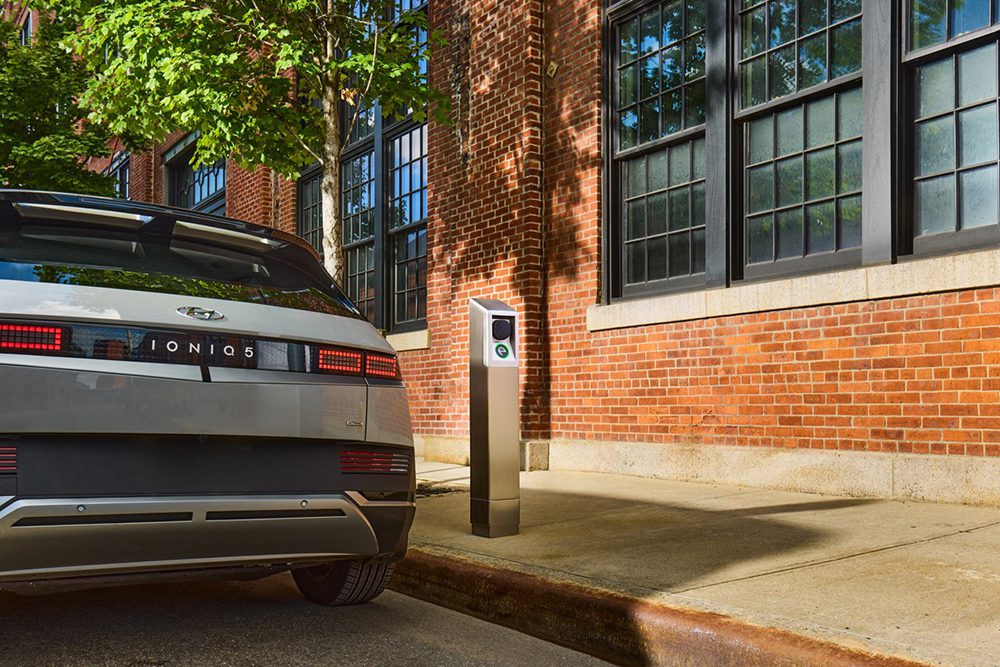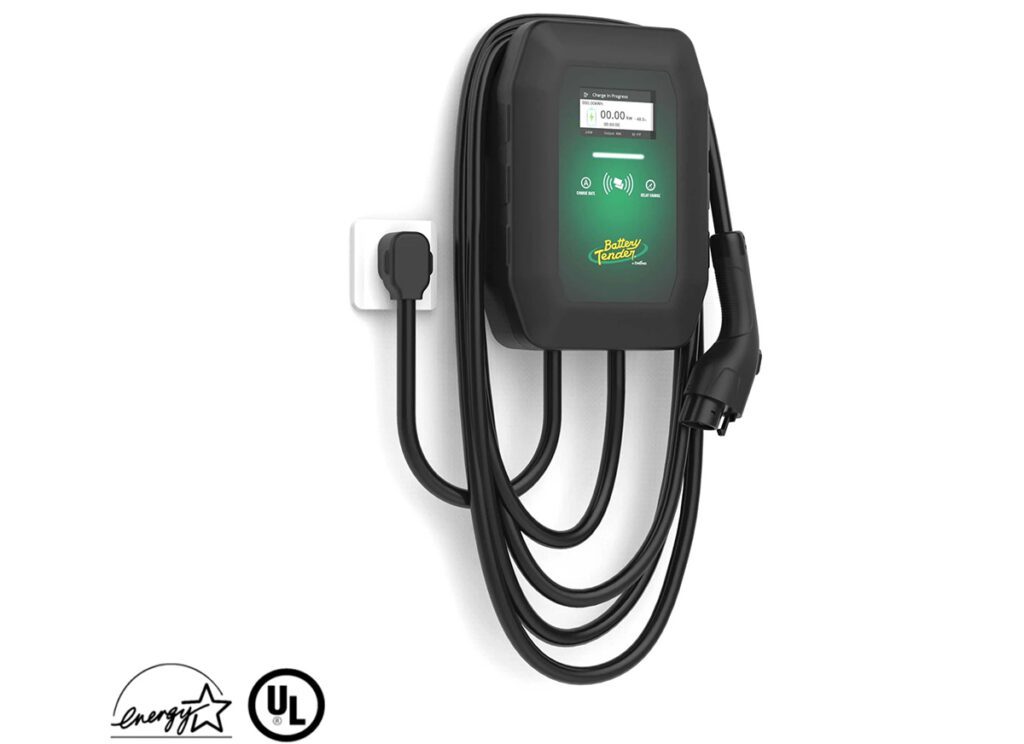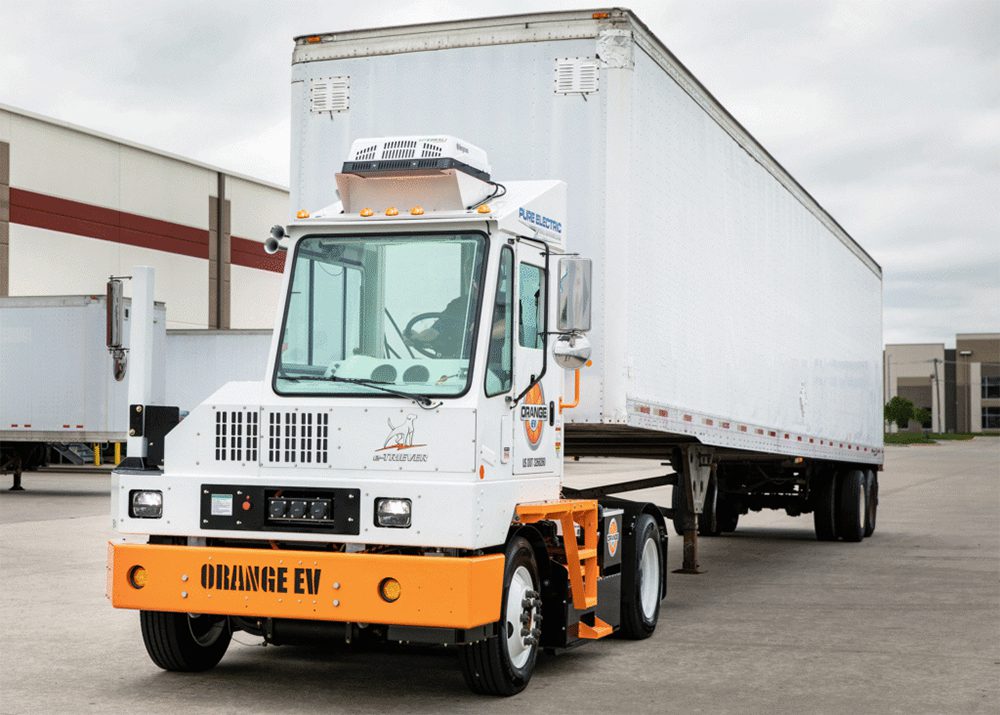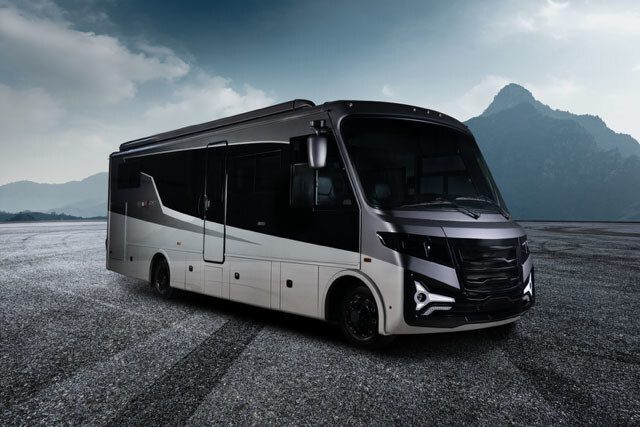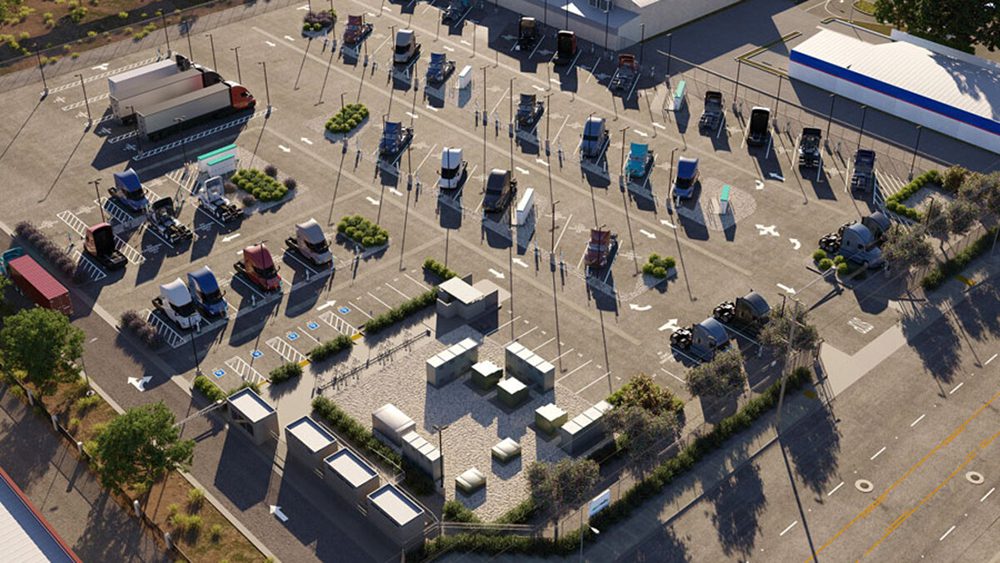Startup companies often evolve as they grow, and sometimes they stumble on a new application for a prosaic product that leads to a new way of doing things, with the huge opportunities that implies. For Mitchell Yow, the CEO of Torque Trends, the journey started with a gearbox, and has led to a complete electrification package that could be a solution for short-range government, commercial and municipal fleets around the country.
Mr. Yow worked nearly twenty years for a company called Gear Vendors, which makes a bolt-on overdrive auxiliary transmission that has been used as an OEM product by several major automakers (Volvo owners: remember the little button on the shift lever that engages overdrive? That’s the one).
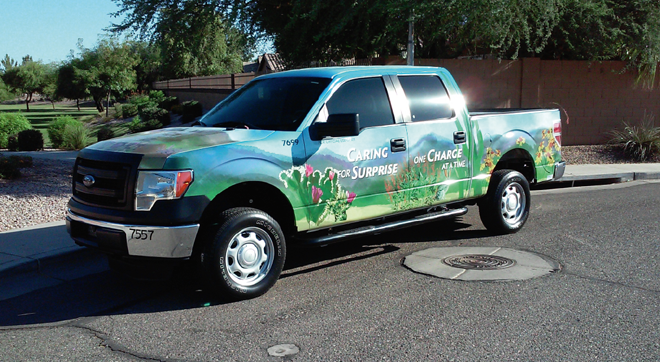
“We were getting more and more requests for a reduction or underdrive – just the opposite of what Gear Vendors made,” Yow told Charged. “Most of that interest was coming from the EV crowd, outfitters and DIYers that were looking for a reduction, something to multiply the torque of their small AC electric motors.”
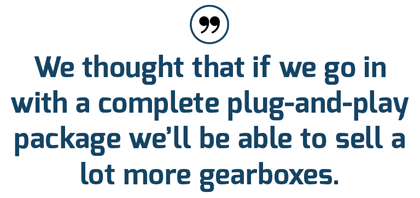
Yow couldn’t convince Gear Vendors to develop a reduction product. “They said the electric thing was just a fad, it would come and go, and they weren’t interested in spending any development dollars on it,” he explains. “I researched it, got passionate about the whole EV movement, and decided that this was going to be something much more than a niche market. So, in 2012, I resigned from that job. I didn’t think San Diego was very start-up friendly, so my wife/business partner and I moved to Surprise, Arizona, where we found a great start-up incubator and lots of support.”
After two years in development and testing, Torque Trends now has its Torque Box in production.
Of truck fleets and gearboxes
A series of serendipitous events led to the development of Torque Trends’ electrification solution for light-duty fleet vehicles. The original idea was simply a plan to sell the gearboxes it manufactures. “We thought that if we go in with a complete plug-and-play package we’ll be able to sell a lot more gearboxes,” said Yow. “So we started talking to [motor manufacturer] UQM and [control system supplier] New Eagle about partnering on doing a package deal.”
Torque Trends converted a Mazda Miata to an EV as a demo vehicle for testing its product. “It’s also been our show vehicle, it’s won awards, and now it’s a race car – Solo 1 SCCA car. So, we started with that, and it was actually unveiling that car here in the City of Surprise – the Mayor drove the car – that started a great relationship. They wanted to partner with us, to convert their fleet to green.”
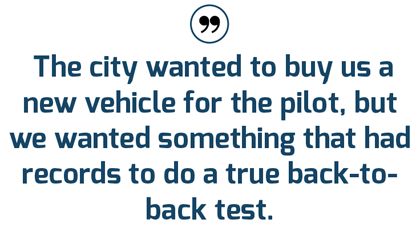
“The Mayor drove our test car, and then the city offered us a truck and the money to do a conversion,” said Yow. “I asked what range they would be happy with, and they said if you give us 50 miles a day, that’d be great. The city wanted to buy us a new vehicle for the pilot, but we wanted something that had records to do a true back-to-back test. So for this particular pilot we’re doing a 2013 Ford F-150 Crew Cab. The powertrain that came out is a 5-liter, with a six-speed, and the truck averaged about 11 MPG.”
Yow has thoroughly researched the fleet market, and has concluded that about 50% of light-duty fleet vehicles could get by just fine with a 50-mile range. “So that’s our market. We’re starting with the F-150, and you could build a company on that vehicle alone. It’s the number-one-selling vehicle in America. We also have plans in the works for prototyping trucks and delivery vans from other manufacturers.”
“We wanted to keep the truck as Ford as possible, and not have to drill a hole, or weld, or modify the truck in any way,” Yow explains. “So, it was quite an ordeal in engineering and prototyping it, because we had to use all the existing holes that Ford originally designed for mounting everything. What we came up with was a complete bolt-on plug-and-play conversion package.”
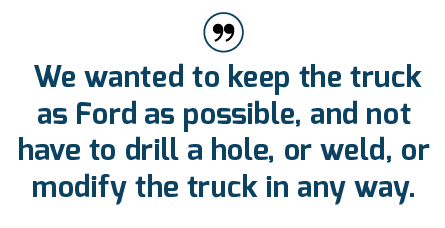
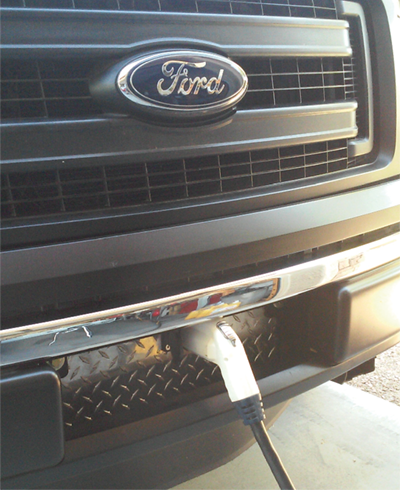
Maximize emissions reduction, save money
In the passenger car market, conventional wisdom is that it’s much better to design an EV “from the ground up” than to convert an existing model. When it comes to the commercial market however, Yow makes a convincing case that converting a fleet’s existing vehicles is the best way to go.
In a widely-cited book called How Bad are Bananas?: The Carbon Footprint of Everything, Mike Berners-Lee pointed out that manufacturing vehicles results in a large amount of carbon emissions and other pollution, so considering only a vehicle’s emissions from use doesn’t tell the whole story. This does not mean, as some writers would like to believe (the topic has been worried to death on the blogs), that it’s greener to keep gas-guzzlers on the road than to replace them, but it does mean that upgrading an existing gas-burning vehicle to an EV can maximize the potential emissions reduction.
“The big part of the carbon footprint of the vehicle is building it,” said Yow. “So, when you start with an existing vehicle, and convert it to electric, you have the lowest carbon footprint possible, as opposed to building a new electric vehicle. If I’ve got a bunch of late-model vehicles in my fleet, I’m not going to wait until they’re worn out and tired before replacing them. Let’s say a vehicle is going to be in my fleet for another ten years, burning gas, and I’m offered an opportunity to convert it to electric now, and not buy all that gas for the next ten years, and maybe even extend the life of that vehicle several years. That’s when the ROI really starts to get good.”

Torque Trends expects that they can show about a 4- to 5-year payback, depending on usage and fuel costs, with about a 60% reduction in overall maintenance costs. “When you add in financing options, it’s a no-brainer,” said Yow.
The company recently announced that it has partnered with Paramount Financial Services, a Scottsdale-based equipment leasing and finance company. Potential customers can now apply online, receive quotes and get approval within 24 hours. Torque Trends financing options are available for a new gearbox, a complete conversion package or a converted new or used truck.
The company plans to build several electric F-150s to offer on short-term leases, giving potential customers that are on the fence an opportunity to test the waters without a long-term commitment. “We can also lease customers a truck while we are converting one of theirs,” said Yow. Torque Tends expects to have as many as five trucks available for lease in the first quarter of 2017, with room for fleet growth based on demand.
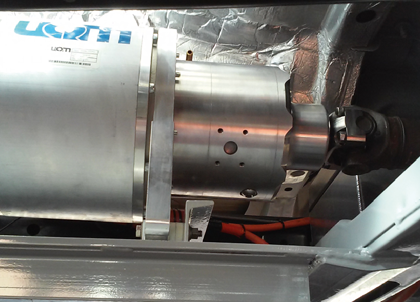
Yow also told us that the company is looking into options for pricing packages that include the cost of conversion, less the battery pack, which can be separately leased. “This gets the package price down, and our customers just pay for their electrons with a monthly lease payment,” he said.
While several companies are building electrified medium-duty trucks, there are surprisingly few options when it comes to light-duty pickups and vans, according to Yow.
“There is a consortium of about seventy power companies in the nation that have made a commitment with the Department of Energy to use 5% of their new vehicle purchase budget to create a zero-emissions fleet. That 5% is equivalent to about $90 million a year. So, there’s a big opportunity there, but there’s nothing really viable for this light-duty, short range vehicle.”
The Package
Torque Trends’ electrification package includes the motor, gearbox, charger, DC to DC convertor, electric AC compressor, coolant pump, heater, electronics, batteries, mounts and crossmembers – everything needed to electrify an F-150, with no welding or cutting. A fleet can choose to purchase the package and do their own installation or provide a truck to Torque Trends and let them do it.
The battery is located where the fuel tank and exhaust were, using the existing mounting points. “We stay out of the truck bed because no one wants to give up any of that space,” says Yow. “So we split a 30 kWh pack into four cases. It’s totally plug-and-play, so the mechanics don’t see the cells or BMS, they just mount the box using the existing mounts on the frame. Trucks give you lot of room to work with.
“We’re probably getting about 2.5 to 3 miles per kilowatt-hour, and so we’ve got a 30 kWh battery pack in the truck. The city asked for a 50-mile range per day between charges – to charge at night, and run it every day. It’s a small city. The vehicle has no business outside of the city it supplies, and the speed limit there is 45 miles per hour. So, we really geared the truck to make it urban-specific, limiting it to 65 miles per hour.”

“We found that in a day’s time there is about an hour or so when drivers are sitting in the truck, with the AC on, and not driving. They are doing paperwork or waiting for something. So when they asked for a 50- mile range, we actually gave them about 75 miles to account for that cushion. After the pilot is finished, we may find that we can downsize that cushion for other fleets.
At low volume, Torque Trends offers its package for around $40,000. “Also, the legacy drivetrain coming out of the vehicle has a value of about $5,000,” said Yow. “So you can either sell it or keep it to service the remaining fleet.”
Running the numbers
Torque Trends is just beginning to analyze telematics data from the Surprise pilot. “It’s a very intense telematics software that we have on there – it’s a lot of data. We just got our first report from the city, and they’re excited about it getting great range. It’s a little premature – we’re still doing some tuning and tweaking on the package, with the help of the software firm, and we think we can make it even better.”
The gearbox
Torque Trends’ gearbox, called the Torque Box, is designed for EVs. “We did a lot of research, we talked to a lot of customers, this really kind of grew out of the demand at international trade shows, where more and more people were asking for underdrive,” said Yow. “And, kind of following Tesla’s lead, we decided not to build a multi-speed transmission, but to go with a single-speed, and focus on the urban fleet vehicle.”
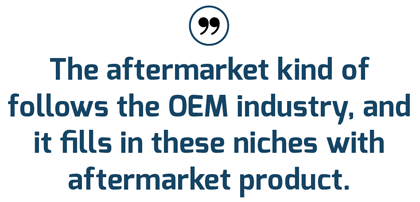
“A couple of different ratios are available – most of the aftermarket was asking for a 2-to-1, so that’s our primary product,” said Yow. However, “We’ve got several outfitters that want a little bit different ratio than we currently have, that we’re working with to create a product. The different ratios depend on what motor you’re using it with, and the intent, what speed is necessary, and so on. Some of the outfitters, for example, one out of China is looking for something more in the area of 2.3-to-1, so we’re in the process of creating a product for the outfitter market that would work for light-duty and some medium-duty trucks.”
The aftermarket for specialty gearboxes is pretty small, so Torque Trends doesn’t have a lot of competition.
“Most of the guys doing conversions have taken electric motors and put them to ICE transmissions, one way or another,” said Yow. “The larger-volume companies worked out deals with the top-tier suppliers, but even those guys have come to us when they need something heavier-duty. The aftermarket kind of follows the OEM industry, and it fills in these niches with aftermarket product. That’s where we feel we have a place. We’re not looking for GM, Ford, Chrysler, Toyota OE type contracts. The outfitter, and the fleets, making packages for converting existing fleet vehicles, is the niche that we’re after.”
This article originally appeared in Charged Issue 27 – September/October 2016. – Subscribe now.






